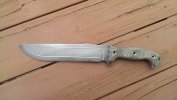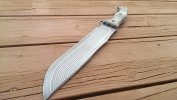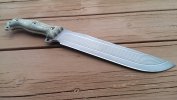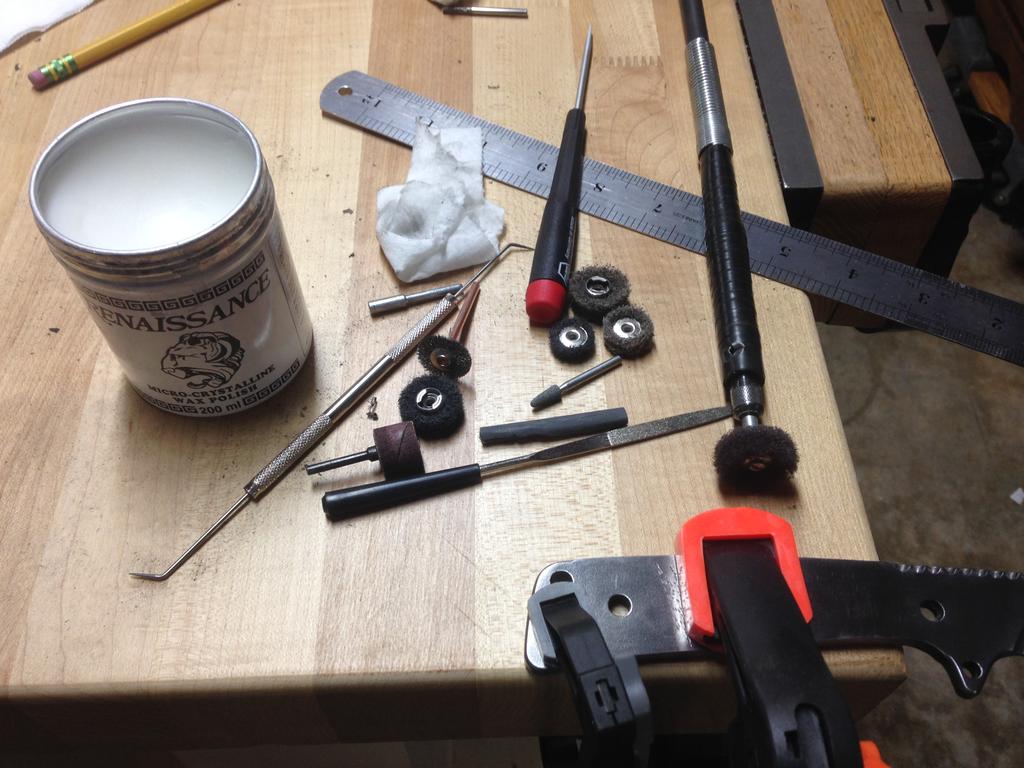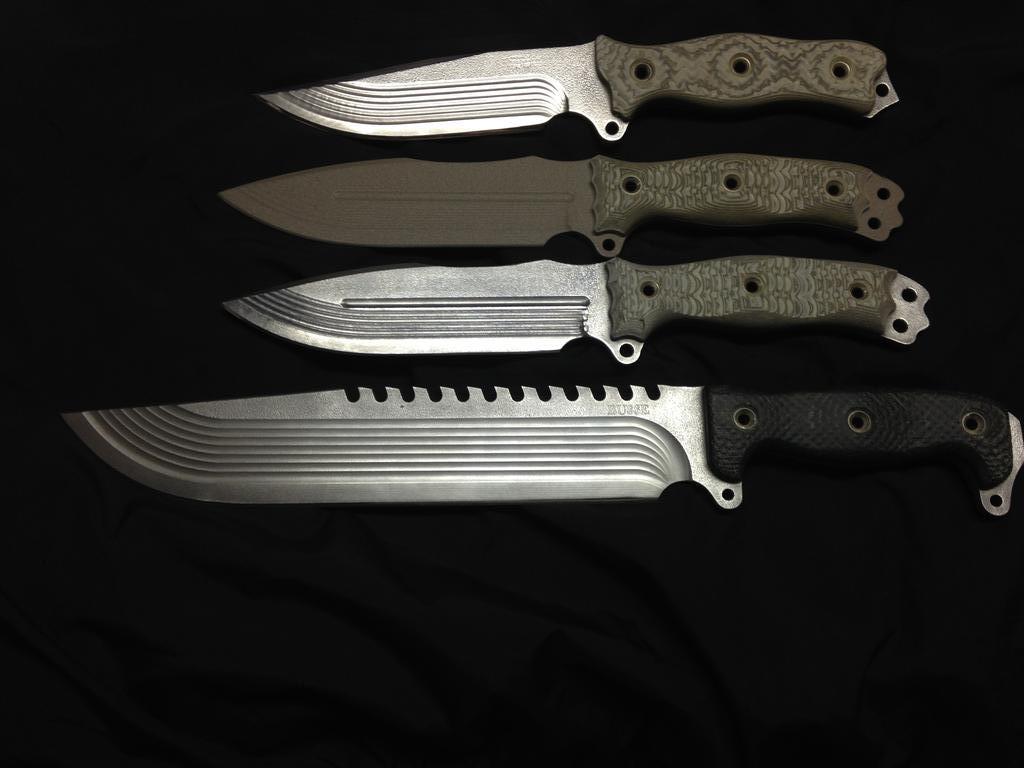- Joined
- Nov 19, 2013
- Messages
- 6,784
Hey guys, got this Mofo frok last ganza, well actually borrowing it from someone and they wanted me to strip it so I did. It had the white/black/gray coating on it. I've never had a problem with stripping a Busse kin, til now. I CAN NOT GET THE PAINT FROM IN BETWEEN THE CBT AND OTHER SPOTS TO COME OFF. Have spent hours trying to sand by hand out/off and just wont. Combination of stubborn paint and tricky grooves. I have only used citristrip to strip knives. Should I use a more potent stripper perhaps?, a more liquid one instead of the pasty/tacky citristrip so can possibly get in the nooks and crannies better then use a wire brush to scrub out? anybody have a similar issue before that solved? Any ideas are appreciated.





